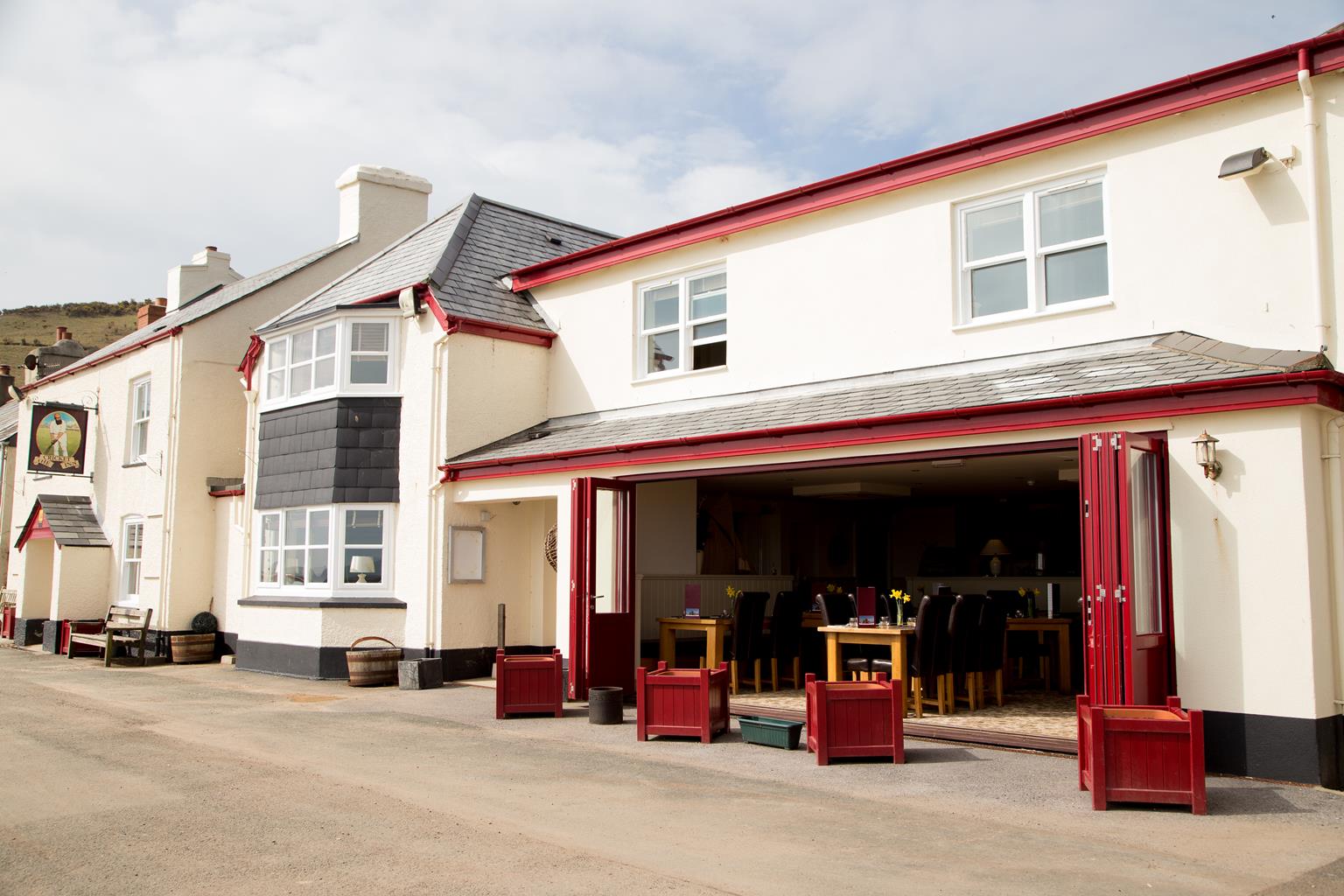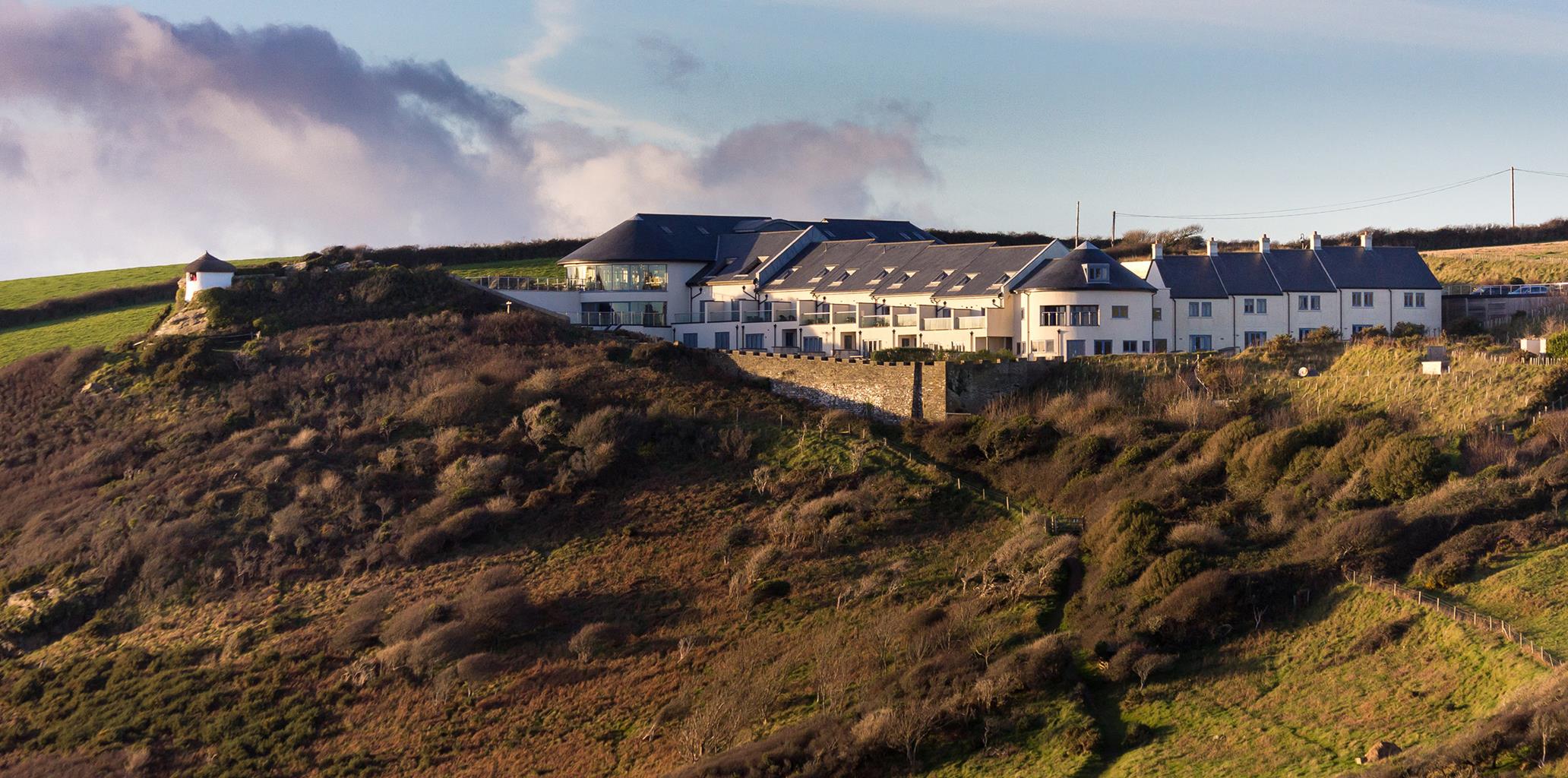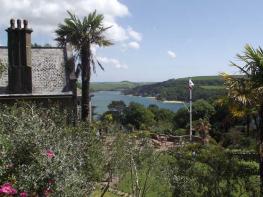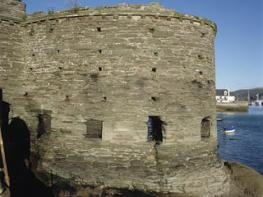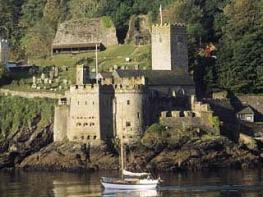Situated on the side of the estuary in Salcombe stands this beautiful hotel. It enjoys stunning…
East Portlemouth

4.5 miles (7.2kms)
About the walk
East Portlemouth has a totally different feel to the resort town of Salcombe that lies opposite, over the water. It is small, very quiet and unspoilt, and somewhat belies its rather difficult history. During the 19th century half the population was evicted by the absentee landlord, the Duke of Cleveland, due to their preference for fishing and wrecking over working the land. The 15thcentury church is dedicated to St Winwaloe, a 5th-century Celtic saint, and a fascinating gravestone in the churchyard reveals the death by burning at the stake of a girl who poisoned her employer in 1782.
From the tiny hamlet of East Portlemouth is where you get some of the best views of the mass of small boats in the harbour, and the various creeks upriver towards Kingsbridge. Once the haunt of smugglers and pirates, today it has a civilised, prosperous, and because of its sheltered position and deep blue waters, an almost Mediterranean feel. It’s extremely popular with the sailing fraternity, with safe waters for novices (at high tide) further up the estuary. This area is a marvellous place for young families, too – at low tide there is a run of white sandy beaches all along the East Portlemouth side.
From this walk it is easy to take the passenger ferry over to Salcombe and pay a worthwhile visit to Overbeck’s Gardens, in its a magnificent setting above South Sands. Originally called ‘Sharpitor’ the house was built in 1913 by Mr and Mrs Vereker, but after they received the devastating news that their son had been killed at Mons in 1914, they offered the house to the Red Cross to be used for convalescent British and allied soldiers. By the time the hospital closed in 1919 over 1,000 men had stayed there and not one death had been recorded. Such was the excellent care, dedication and kindness shown to them by the staff and the Verekers themselves.
In 1928, Otto Overbeck, an inventor and art collector acquired the estate. Probably his most famous invention was the electrical ‘Rejuvenator’ which he claimed would banish many ailments and defy the ageing process. Through fierce marketing and endless testimonials in newspapers and journals worldwide, the public were persuaded to buy his invention and with the profits Otto bought the house and grounds. In his will Otto bequeathed the estate to the National Trust and visitors today can spend hours admiring the fantastic collection of rare and sub-tropical plants, thriving in the warm microclimate. The gardens are particularly colourful in spring.
Walk directions
Park on the laneside near the phone box (or in the parking area – village hall fund contributions). Walk through the parking area and a gate then go steeply downhill on a narrow tarmac footpath signposted ‘Salcombe’, which gives way to steep steps.
When you reach the lane at the bottom of the steps, turn right if you want to visit The Venus Café and catch the ferry to Salcombe. If you want to get on with the walk, turn left along the lane as it follows the edge of the estuary. This is the official route of the coast path and it passes some very exclusive residences.
The lane leads to the pretty, sandy beach at Mill Bay. Carefully follow the acorn coast path signs for Gara Rock through a sycamore wood, with lovely views across the estuary, and glimpses of inviting little coves.
At Limebury Point you reach open cliff, from where there are great views to South Sands and Overbeck’s opposite and craggy Bolt Head. The coast path now bears eastwards below Portlemouth Down, which was divided into strip fields in the late 19th century.
The path along this stretch undulates steeply, and is rocky in places. Keep going until you reach the bench and viewpoint over the beach at Rickham Sand. Just beyond this, as the coast path continues right (there is reasonable access to the beach), take the left fork and climb steeply up below the lookout and through a gate to reach a signpost by the Gara Rock restaurant.
Turn left to reach the drive and walk straight on up the lane. After 250yds (229m) turn left through a gate in the hedge signposted ‘Mill Bay’. Walk straight ahead through a gate and follow a fenced path to a gate; note Malborough church in the distance. Pass through a woodland strip, then a gate, and cross a farm track. Go through the next gate and down the public bridleway.
This runs gradually downhill beneath huge, ancient, pollarded lime trees, with a grassy combe to the right. Walk through the NT car park to reach Mill Bay.
Turn right along the lane. If you want to avoid the steps, look out for a footpath sign pointing right, up a narrow, steep, path to regain East Portlemouth and your car; if not, continue along the lane and retrace your route up the steps.
Additional information
Rocky coast path, field paths and tracks
River estuary, rugged coast and coves, farmland
Keep on lead near livestock and unfenced cliffs
OS Explorer OL20 South Devon
Near phone box in East Portlemouth or in small parking area
At Mill Bay and near The Venus Café
<p>Many of these sandy coves are cut off at high tide, i.e. there is no access from the shore – take care</p>
WALKING IN SAFETY
Read our tips to look after yourself and the environment when following this walk.
Find out more
Also in the area
About the area
Discover Devon
With magnificent coastlines, two historic cities and the world-famous Dartmoor National Park, Devon sums up all that is best about the British landscape. For centuries it has been a fashionable and much loved holiday destination – especially south Devon’s glorious English Riviera.
Close to the English Riviera lies Dartmoor, one of the south-west’s most spectacular landscapes. The National Park, which contains Dartmoor, covers 365 square miles and includes many fascinating geological features – isolated granite tors and two summits exceeding 2,000 feet among them.
Not surprisingly, in Dartmoor the walking opportunities are enormous. Cycling in the two National Parks is also extremely popular and there is a good choice of off-road routes taking you to the heart of Dartmoor and Exmoor. Devon’s towns and cities offer stimulating alternatives to the rigours of the countryside.
Nearby stays
Restaurants and Pubs
Nearby experiences
Recommended things to do
Why choose Rated Trips?
Your trusted guide to rated places across the UK
The best coverage
Discover more than 15,000 professionally rated places to stay, eat and visit from across the UK and Ireland.
Quality assured
Choose a place to stay safe in the knowledge that it has been expertly assessed by trained assessors.
Plan your next trip
Search by location or the type of place you're visiting to find your next ideal holiday experience.
Travel inspiration
Read our articles, city guides and recommended things to do for inspiration. We're here to help you explore the UK.







